Twenty years ago there would have been only one possible headline for this odyssey along the entire length of the Central line – "Look back in Ongar". Or perhaps "Look forward in Ongar", since, as the eastern terminus of the line, that sleepy corner of Essex would have been the obvious place to start. But in 1994 Ongar station, underused and loss-making, was closed. "Look back in Epping" just doesn't sound the same, so dammit, I'm starting in Ongar anyway. The current incarnation of the Central line is 46 miles in length, but I'm doing the pre-1994 version. I'm going the extra six miles.
Ongar's tube history has been largely written out. A steam train, operated by the Epping Ongar Railway, runs on the line now, carrying small children and whiskery steam enthusiasts. It was a railway for a century, a volunteer tells me, and only part of the tube from 1957-94, so the reversion is justified. But I reckon it's aesthetic, too. Everyone loves steam trains; who in their right mind gives a hoot about tube trains?
When Ongar lost its tube, the locals were devastated. "It was all part of the decline of the town," says the ticket seller, who is also a local councillor. "It used to be an important place in Essex, and had a school, a hospital, the railway. Gradually it all went, and it became a dormitory for London."
I take the steam train from Ongar's pretty station, with its real coal fire, to North Weald, which was also axed in 1994, passing the remnants of Blake Hall, which was closed in 1981 when it had the distinction of being the least used station on the London underground, with just six passengers a day. From North Weald I take the green-liveried heritage bus to Epping, where the Central line now begins. It is a large car park with a less imposing town attached, and I feel my look back in Ongar has been justified.
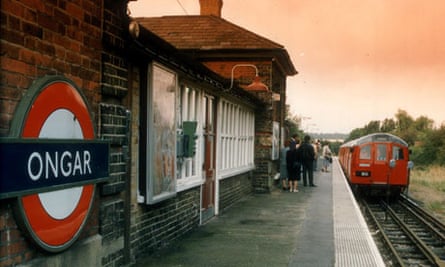
From Epping I go just one stop – to Theydon Bois. I've never been to Theydon Bois, but have always been captivated by the name, which suggests a Victorian actor-manager or a well-meaning but talentless amateur captain of the England cricket team c 1910. The initial impression is not good. "It's not much of a town, more a forest, really," says the friendly female attendant on the platform. The Station Arms has closed down, and there's a planning application for a block of flats pinned to the door. Further on, however, there are signs of life – a big, bright pub called the Bull, a bakery, butchers, barbers, a dry cleaners, an Indian restaurant – the Theydon Bois Balti House – and an upmarket cafe. Theydon Bois lives.
From Theydon Bois, I ride the east London end of the Central line, with its curious loop around Hainault. Roding Valley (which has inherited Blake Hall's mantle as the least used station on the tube network), Chigwell, Fairlop, Barkingside, Gants Hill. How evocative are those names. Can I do this romantic journey justice? The Central line is the biggest, busiest, fastest and reddest line on the underground, and this trainspotterish ticking off of its 49 stations (as well as its abandoned outposts) is our way of celebrating the tube's 150th birthday.
It wasn't the first line – that honour belongs to the Metropolitan Railway, the first underground railway in the world, which ran from Paddington to Farringdon and was opened on 10 January 1863. The Metropolitan Railway was, however, not really a "tube". It was constructed close to the surface using the so-called "cut-and-cover" technique, whereby a trench is dug for the railway and then roofed over, and was a conventional railway with carriages pulled by steam trains. The stations also resembled their above-ground cousins – look at the cathedral-like platform five at Baker Street, which has been restored to its Victorian glory.
Tubes began life in the late 1860s, with a short-lived subway under the Thames along which a single carriage with up to 12 passengers was cable-hauled by two stationary steam engines. That was followed in 1890 by the first electric tube line from the City to Stockwell and, four years later, by the Waterloo and City line. The Central line, which was originally called the Central London Railway and ran from Shepherd's Bush to Bank, was the third tube line, and proved an immediate success when it opened in the summer of 1900. "London, all agape, crowds to the twopenny tube," the Daily Mail reported in the week of its opening. It now costs £8.90 rather than tuppence for a go-anywhere ticket, but the crowds still congregate. Today, in its much-extended form, it remains central to London life, connecting the suburban north-west with the East End, bringing shoppers to Oxford Circus and tourists to Marble Arch, serving God at St Paul's and Mammon at Bank.
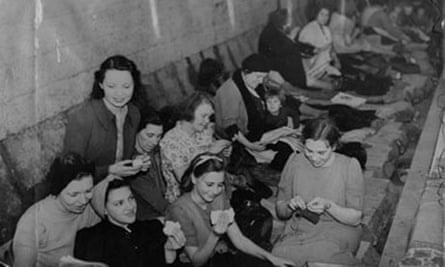
The name Central line was formally adopted in 1937, at the same time as the line was being extended east and west as part of a London-wide integration and expansion programme, though many of the stations built in the late 1930s were not opened until after the second world war. For the duration of the war, those stations – especially in heavily bombed east London – served as air-raid shelters, and the tube tunnels became the sites of factories and warehouses. From 1942-45, armaments company Plessey had a factory producing aircraft components in the 2.5-mile twin tunnels between Leytonstone and Gants Hill. The Central line really has seen it all, and continues to be a touchstone of life in the capital.
I stop briefly at Stratford, the shiny, energetic new face of east London, home of the Olympic park and Westfield shopping centre. I like Westfield – the brashness, the anthemic music, the ice rink where the struggles of the young to stay upright feel like a metaphor for life. I also like the fact that across the road from Westfield the old 1970s Stratford Centre, with its poundshops and market stalls, is still going strong, a haven for elderly East Enders banging on about the war. Two eras side by side.
Those elderly locals have good reason to obsess. The second world war had a profound effect on the East End, and on the Central line itself. A bomb hit Bank station in January 1941, killing 56 people, and on 3 March 1943, in the worst civilian disaster of the war, 173 people died at Bethnal Green station. They had been rushing to seek shelter after the air-raid sirens had sounded, when a woman fell at the bottom of the set of stairs that led down to the station from the street. Those behind fell on top of her, and in the panic that followed many were crushed or suffocated. According to John Day and John Reed's The Story of London's Underground, 146 of the 173 who died were women and children.
A plaque with the names of the dead was unveiled to mark the 50th anniversary of the disaster in 1993, and a more elaborate memorial is now being constructed by the Stairway to Heaven Trust. The first phase is complete, but there are posters next to the station entrance appealing for funds to complete it. This is a locally driven act of remembrance. For all the yuppification of the East End, many people have lived hereabouts all their lives and were children during the blitz. They lost friends and relatives in the disaster, and the collective memory is long.
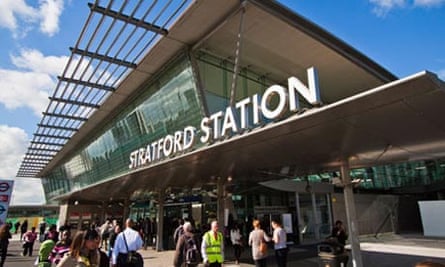
The Central line now moves out of the East End and into the heart of the West End. The most intriguing station in this middle section is one that no longer exists – British Museum, which was decommissioned in 1933. It used to stand at 133 High Holborn, now a branch of the Nationwide building society. The station was killed off by the proximity of Holborn, more popular because it was an interchange, and I'm pleased to see its supplanter at least has the grace to recognise its phantom existence. A sign at the top of the escalator at Holborn shows the station's name as Holborn/British Museum. The station featured in the 1935 film Bulldog Jack, and is also reputed to be haunted by the daughter of an Egyptian pharaoh whose screams can occasionally be heard echoing down the tunnels.
Oxford Circus is the lynchpin of the Central line. At Ongar, they told me that during the battle to save their station from the cost-cutters they had commissioned a report by accountants Coopers & Lybrand which sought to prove that Oxford Circus was the least productive station on the line because, while it was a destination for thousands, no one bought tickets there. With such statistical sophistry, I can see why their campaign failed.
Above ground, Oxford Circus teems. Everyone is selling something. Chuggers energetically chug in the rain; a woman from an eastern religious sect is offering an instant pathway to the Truth; the Topshop sale is peddling its own version of nirvana; a man next to one of the station's many exits is holding up large placards proclaiming a royal-inspired masonic conspiracy. All this hucksterism infects the Central line. A young man playing the accordion gets on at Oxford Circus; "playing" overstates it – he is striking the keys tunelessly. A young woman with dyed red hair holds a paper cup out. Everyone ignores her. It is all depressingly half-hearted. They order these things better in Paris. The female driver gets wind of his performance, and tells him where to get off – Lancaster Gate, to be precise.
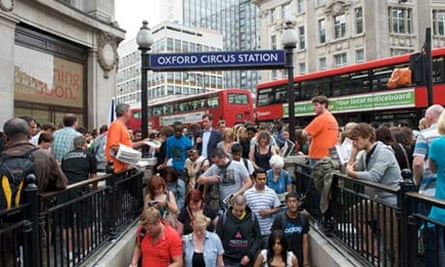
Further west, away from Oxford Circus's relentlessness, reposes Holland Park, the best preserved station on the line. The ticket office, with its skylight and green tiling, has a pleasingly antique feel entirely in keeping with the grand houses and sweeping avenues of this affluent part of west London. Here, men still wear overcoats with suede collars, gift shops sell silver shaving brushes for £45, and the local delicatessen stocks pink champagne truffles. Bethnal Green it isn't.
The next stop, Shepherd's Bush, is less rarefied. Attempts have been made to beautify the green with pebbledashed walkways and the public loo has been converted into a nightclub, but all in vain. Some places never change. There is an incongruous piece of public art at one end of the green – Goaloids, by Elliott Brook: two sculptures made from goalposts and erected last year to mark the site of the 1908 Olympic cup final in which Britain beat Denmark 2-0. The sculpture is behind a fence, because this corner of the green is a litter-strewn mudbath. Either it hasn't recovered from the 1908 match, or they've held a rock concert here recently.
Shepherd's Bush station, though, is impressive – large, spacious and constructed with the grey steel slabs that give the Jubilee line its monumentalism. The station was rebuilt in 2008 to service the Westfield shopping centre next door – the eastern and western sections of the Central line are twinned in their devotion to Olympic sport and olympian shopping – but this Westfield has less zing than its younger cousin in Stratford. This is just high-end shopping rather than a complete life experience. London's energy now resides in the east.
I feel obliged to get off at the next stop, too, to take a sympathetic look at White City, a place forever being abandoned. The stadium built for the 1908 Olympics has been knocked down – so much for the Olympic legacy – and even the dogs who used to race there have been hounded out. White City has been the home of BBC TV for half a century, but it is now leaving too, and who knows what will happen to Television Centre. Thank goodness Wormwood Scrubs is staying. Central line trains run opposite the prison, travelling quickly as they pass, that characteristic high-pitched whine and the occasional toot on the horn reminding the inmates that everyone but them is escaping this unlovely glass-and-concrete world.
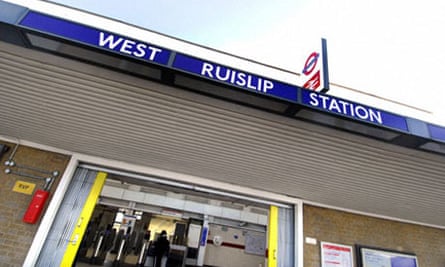
Leaving White City I can feel the lure of West Ruislip at the end of the line. What is it about Ruislip that makes it a national joke? The inherent comedy of the name, I suppose. Leslie Thomas's quintessentially 1970s novel Tropic of Ruislip, with its status- and sex-obsessed suburban couples, hasn't helped. The 70s was the era of sexual awakening and fondue parties, and Thomas's Ruislip came to epitomise it. What will I discover when I finally get there?
I go through the Actons, east, north and west; take the fork to Ealing Broadway for the sheer hell of it; and then set off on the final scenic leg – Hanger Lane, Perivale, Greenford, Northolt, mile after mile of 1930s semis and identikit warehouses. It is almost dark when I reach West Ruislip, and I'm exhausted. They say the man who is tired of the Central line is tired of life, but the walk from White City station to the Scrubs in a heavy squall has done for me.
My spirits are not lifted by the immediate prospect as I leave the station. There is an off-licence, an Indian takeaway and the stop for buses to Uxbridge, all huddled together on a flyover. "Is there a town here?" I ask one of the natives. "Sort of," says the man. "Turn right at the crossroads at the bottom of the road, and you'll come to Ickenham." Ruislip, despite having three stations named after it – South Ruislip and Ruislip Gardens as well as West Ruislip – appears not to exist. It is a music-hall joke; a literary conceit; a state of mind; a flyover in the middle of nowhere. How has Ruislip survived while poor Ongar, whose existence I can vouch for, was obliterated from the map?
I should be filled with a sense of achievement at the end of my journey, yet I feel only emptiness. On the road to Ickenham I stop at a pub called the Soldiers Return for a red wine and a packet of Quavers. In Tropic of Ruislip, Thomas portrayed a world where "dreams were regularly dreamed, ambitions thwarted … love visited and sex sniffed around". I sense none of that sexual energy, that unquenchable lust, in the Soldiers Return, where the TV screens are showing the football results, the regulars are discussing what they got for Christmas, and the abiding question for me is whether the pub's name should have an apostrophe. The Chinese philosopher Laozi was right. "A good traveller has no fixed plans and is not intent on arriving." To expect to find meaning at the end of the line is naive. No doubt Odysseus experienced the same sense of anticlimax when he finally made it back to Ithaca from Troy, and he hadn't even had the consolation of visiting Theydon Bois.
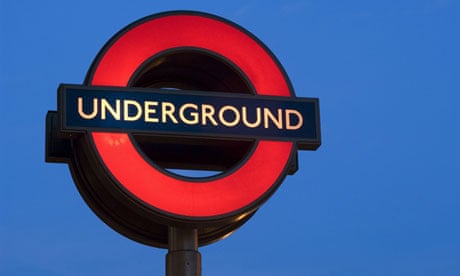







Comments (…)
Sign in or create your Guardian account to join the discussion